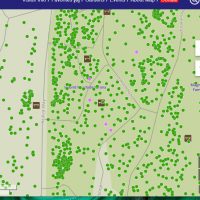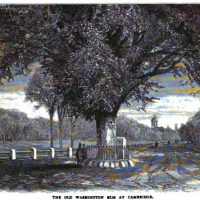Exploring Student Art at UW Botanic Gardens, Part 2

Recently on the blog, we highlighted a new art installation at the Center for Urban Horticulture, created by Masters of Fine Arts (MFA) candidate Connor Walden. However, Walden isn’t the only artist whose work you can see as you walk around the Center. Quite close to Walden’s work, southwest of Goodfellow Grove and hidden in the shadows of the trees, is a wood and glass three-walled structure with a small bench, shown in the image on the left.
Read moreJuly 2018 Plant Profile: Illicium henryi

Henry’s star anise, Illicium henryi, is a large, evergreen shrub with dainty red flowers and surprising aromatic leaves.
Read moreSummer Flower Subtlety at the Washington Park Arboretum

1) Illicium henryi Henry Anise Tree
This attractive evergreen shrub is native to China.
It has star-shaped flowers in pink to deep crimson, anise-scented leaves when bruised and is tolerant of shade.
This specimen is located adjacent to the Lookout Loop Trail in the Asiatic Maple collection. Grid 25-1E, if using our mobile interactive plant map.
2) Leptospermum scoparium Manuka
A broad-leafed evergreen shrub native to New South Wales, Victoria, Tasmania, New Zealand.
Read morePurple Dots: A Dive into the Washington Park Arboretum’s Interactive Map

If you’ve spent any time looking through our interactive map of the Washington Park Arboretum, you’ve probably noticed those purple plant dots. While most of the dots denoting different plants in the collection are bright Kelly green, some of them are a festive light purple color. But why?
I stumbled on this question while trying to identify a tree that I had taken a picture of when I was wandering through the arboretum a couple weeks ago.
Hydrangeas, Crape Myrtles and Giant Himalayan Lilies: Summer Delights at the Botanic Gardens

Summer is a great time to visit the UW Botanic Gardens and offers the best weather of the year to enjoy blooms and botanically interesting walks.
Read moreSelected Cuttings from the Washington Park Arboretum for June 2018

1) Kalmia latifolia Mountain Laurel
This attractive evergreen shrub is native to the eastern United States.
Has five-sided cup-shaped clusters of pink flowers.
The name honors Pehr Kalm (1715-1779) and latifoliia means “Broad Leafed”.
2) Rhododendron occidentale Western Azalea
This deciduous shrub is native to the coasts of central and southern Oregon and California.
Fragrant, funnel-shaped flowers are borne in trusses and vary from white to pale rose, with or without a yellow blotch and sometimes streaked with darker rose markings.
June 2018 Plant Profile: finding the story of our George Washington Elm

The Washington Park Arboretum has two large Ulmus americana in the collection: one of which, the “George Washington” elm, is a historic American tree.
Read moreSelected Cuttings from the Washington Park Arboretum

1) Enkianthus campanulatus Redvein Enkianthus
This attractive deciduous shrub is native to open woodlands in Japan.
Tiny bell-shaped, creamy-yellow to reddish flowers held together in clusters.
Small elliptic leaves turning bright red, orange and yellow in the fall.
2) Davidia involucrata Handkerchief Tree
This deciduous tree is native to woodlands in central China.
Its small, reddish purple flower heads are surrounded by a pair of large, white bracts up to 30 cm.
May 2018 Plant Profile: Rhododendron ‘Ken Janeck’

With blushing pink flower trusses and leaves with a layer of attractive fuzz underneath, Rhododendron ‘Ken Janeck’ is a sensational shrub for Northwest gardens.
Read moreTwo New Ways to Experience the Arboretum

We are excited to introduce two new ways of experiencing the Arboretum.
For a more active person, we are offering Arboretum Running Tours. We’ll combine exercise, education, and entertainment on a fun running tour through the Arboretum, one of Seattle’s Olmsted Parks and home to the University of Washington Botanic Gardens’ world-class plant collections. You’ll learn about the history and design of the park, a few choice plants, and traditional or modern uses of various plants along the route.